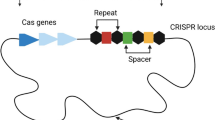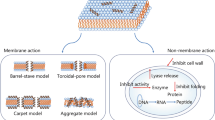Abstract
The key to shortening tuberculosis (TB) drug regimen lies in eliminating the reservoir of non-replicating persistent (NRP) Mycobacterium tuberculosis (Mtb). Pyrazinamide (PZA) is the only known drug used as part of a combination therapy that is believed to kill NRP Mtb and achieve sterilization. PZA is active only under low pH screening conditions. Screening and identification of NRP-active anti-TB compounds are severely limited because compounds are usually inactive under regular assay conditions. In an effort to design novel NRP-active anti-TB compounds, we used pyrazinamide as a core and hybridized it with the fragments derived from marketed drugs. One of these designs, compound 8, was a hybrid with fluoroquinolone. This compound exhibited >10 fold improvement in NRP activity under low pH condition as compared to pyrazinamide and a modest activity (0.8 log10 kill) under nutritionally starved NRP condition. Furthermore, compound 8 was active against fluoroquinolone-resistant strains and did not show any activity in a DNA supercoiling assay (gyrase inhibition), suggesting that its mechanism of action is not that of the parent fluoroquinolone. These results provide a novel avenue in the exploration of new chemotypes that are active against non-replicating Mtb.




Similar content being viewed by others
References
Aditya A, Kodadek T (2012) Incorporation of heterocycles into the backbone of peptoids to generate diverse peptoid-inspired one bead one compound libraries. ACS Comb Sci 14:164–169
Berner H, Kerber G (2004) Preparation of pleuromutilin derivatives for therapeutic use as antimicrobial agents. WO 2004011431:A1
Carmignani M, Volpe AR, Botta B, Espinal R, De Bonnevaux SC, De Luca C, Botta M, Corelli F, Tafi A, Sacco R, Monache GD (2001) Novel hypotensive agents from Verbesina caracasana. 8. Synthesis and pharmacology of (3,4-Dimethoxycinnamoyl)-N 1-agmatine and synthetic analogues. J Med Chem 44:2950–2958
Check E (2007) After decades of drought, new drug possibilities flood TB pipeline. Nat Med 13:266
Cho SH, Warit S, Wan B, Hwang CH, Pauli GF, Franzblau SG (2007) Low-oxygen-recovery assay for high-throughput screening of compounds against nonreplicating Mycobacterium tuberculosis. Antimicrob Agents Chemother 51:1380–1385
Coe JW, Dehnhardt CM, Jones P, Kortum SW, Sabnis YA, Wakenhut FM, Whitlock GA (2013) Preparation of indazoles as Janus kinase inhibitors for treating allergic and respiratory conditions and other diseases. WO 2013014567:A1
Darby CM, Ingólfsson HI, Jiang X, Shen C, Sun M, Zhao N, Burns K, Liu G, Ehrt S, Warren JD, Anderson OS, Brickner SJ, Nathan C (2013) Whole cell screen for inhibitors of pH homeostasis in Mycobacterium tuberculosis. PLoS ONE 8:e68942
Dye C (2009) Doomsday postponed? Preventing and reversing epidemics of drug-resistant tuberculosis. Nat Rev Microbiol 7:81–87
Dye C, Williams BG (2010) The population dynamics and control of tuberculosis. Science 328:856–861
Gandhi NR, Nunn P, Dheda K, Schaaf HS, Zignol M, van Soolingen D, Jensen P, Bayona J (2010) Multidrug-resistant and extensively drug-resistant tuberculosis: a threat to global control of tuberculosis. Lancet 375:1830–1843
Heifets L, Lindholm-Levy P (1992) Pyrazinamide sterilizing activity in vitro against semidormant Mycobacterium tuberculosis bacterial populations. Am Rev Respir Dis 145:1223–1225
Heifets L, Sanchez T (2000) New agar medium for testing susceptibility of Mycobacterium tuberculosis to pyrazinamide. J Clin Microbiol 38:1498–1501
Huang Q, Li YY, Zhang Y, Ren Y, Fu Z, Xu SQ (2007) Nutrient-starved incubation conditions enhance pyrazinamide activity against mycobacterium tuberculosis. Chemotherapy 53:338–343
Iyer PS, Panda M (2014) Fragmentation intelligent re-combination enumeration (F.I.R.E.) approach to lead generation. Wiley, Weinheim (In print)
Mandavilli A (2007) Virtually incurable TB warns of impending disaster. Nat Med 13:271
Matsumoto J, Nakano J, Chiba K, Nakamura S (1986) 1,8-Naphthyridine derivatives. EP 191451:A1
McCune RM, Mcdermott W, Tompsett R (1956) The fate of Mycobacterium tuberculosis in mouse tissues as determined by the microbial enumeration technique. II. The conversion of tuberculosis infection to the latent state by the administration of pyrazinamide and a companion drug. J Exp Med 104:763–802
Meng Q, Chen Y, Yao Q (2007) Synthesis of N1-[(2E)-3,7-dimethyl-2,6-octadien-1-yl]-N2-(tricyclo[3.3.1.13,7]dec-2-yl)-1,2-ethanediamine (SQ-109 tuberculostatic) Zhongguo Yaowu Huaxue Zazhi 17:279–282
Mitchison DA (2005) The diagnosis and therapy of tuberculosis during the past 100 years. Am J Respir Crit Care Med 171:699–706
Orita A, Miwa K, Uehara G, Oteraa J (2007) Integration of solventless reaction in a multi-step process: application to an efficient synthesis of PA-824. Adv Synth Catal 349:2136–2144
Russel DG, Barry CE, Flynn JL (2010) Tuberculosis: What we don’t know can, and does, hurt us. Science 328:852–856
Ryukou T, Toshifumi W, Tatsurou I, Susumu M, Akiko I (2007) Preparation of N-(3,4-disubstituted phenyl)salicylamide derivatives as inhibitors of STAT6 and NF-κB activation. WO 2007148711:A1
Safina BS, Baker S, Baumgardner M, Blaney PM, Chan BK, Chen Y-H, Cartwrightm MW, Castanedo G, Chabot C, Cheguillaume AJ, Goldsmith P, Goldstein DM, Goyal B, Hancox T, Handa RK, Iyer PS, Kaur J, Kondru R, Kenny JR, Krintel SL, Li J, Lesnick J, Lucas MC, Lewis C, Mukadam S, Murray J, Nadin AJ, Nonomiya J, Padilla F, Palmer WS, Pang J, Pegg N, Price S, Reif K, Salphati L, Savy PA, Seward EM, Shuttleworth S, Sohal S, Sweeney ZK, Tay S, Tivitmahaisoon P, Waszkowycz B, Wei B, Yue Q, Zhang Z, Sutherlin DP (2012) Discovery of novel PI3-kinase δ specific inhibitors for the treatment of rheumatoid arthritis: taming CYP3A4 time-dependent inhibition. J Med Chem 55:5887–5900
Scanio MJC, Shi L, Bunnelle WH, Anderson DJ, Helfrich RJ, Malysz J, Thorin-Hagene KK, Van Handel CE, Marsh KC, Lee C-H, Gopalakrishnan M (2011) Structure-activity studies of diazabicyclo[3.3.0]octane-substituted pyrazines and pyridines as potent α4β2 nicotinic acetylcholine receptor ligands. J Med Chem 54:7678–7692
Vandal OH, Roberts JA, Odaira T, Schnappinger D, Nathan CF, Ehrt S (2009) Acid-susceptible mutants of Mycobacterium tuberculosis share hypersusceptibility to cell wall and oxidative stress and to the host environment. J Bacteriol 191:625–631
Zimhony O, Vilchèze C, Arai M, Welch JT, Jacobs WR Jr (2007) Pyrazinoic acid and its n-propyl ester inhibit fatty acid synthase type I in replicating tubercle bacilli. Antimicrob Agents Chemother 51:752–754
Acknowledgments
Authors are thankful to Dr. Vasan Sambandamurthy for providing MoxR Mtb strain and Dr. Prashanthi Madhavapeddi for interpretation of DNA supercoiling assay data for this study. We are grateful to Dr. Boudewijn deJonge and Dr. Vasan Sambandamurthy for proofreading this manuscript. The analytical support provided by Suresh Rudrapatna and Menasinakai Sreenivasaiah is deeply acknowledged.
Conflict of interest
None.
Author information
Authors and Affiliations
Corresponding authors
Additional information
Shankar D. Markad and Parvinder Kaur have contributed equally to this work.
Rights and permissions
About this article
Cite this article
Markad, S.D., Kaur, P., Kishore Reddy, B.K. et al. Novel lead generation of an anti-tuberculosis agent active against non-replicating mycobacteria: exploring hybridization of pyrazinamide with multiple fragments. Med Chem Res 24, 2986–2992 (2015). https://doi.org/10.1007/s00044-015-1352-6
Received:
Accepted:
Published:
Issue Date:
DOI: https://doi.org/10.1007/s00044-015-1352-6




